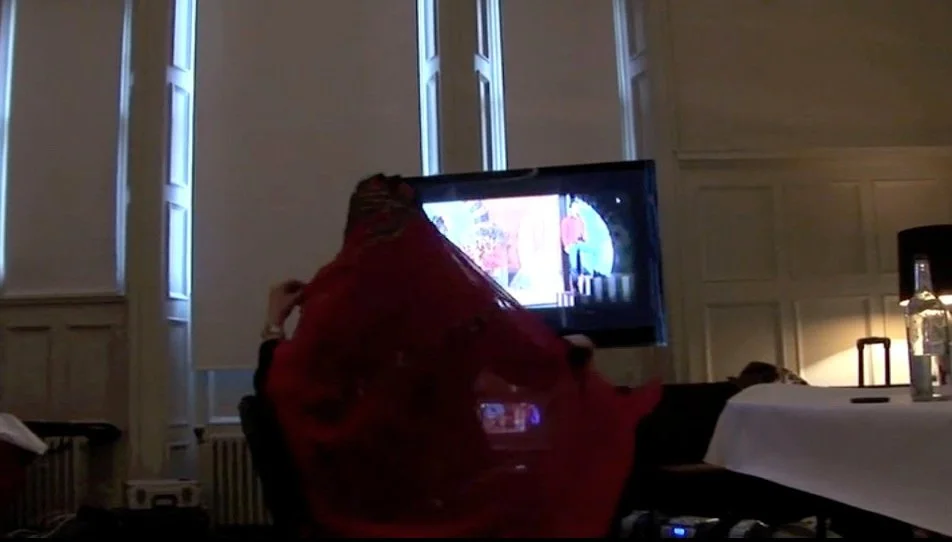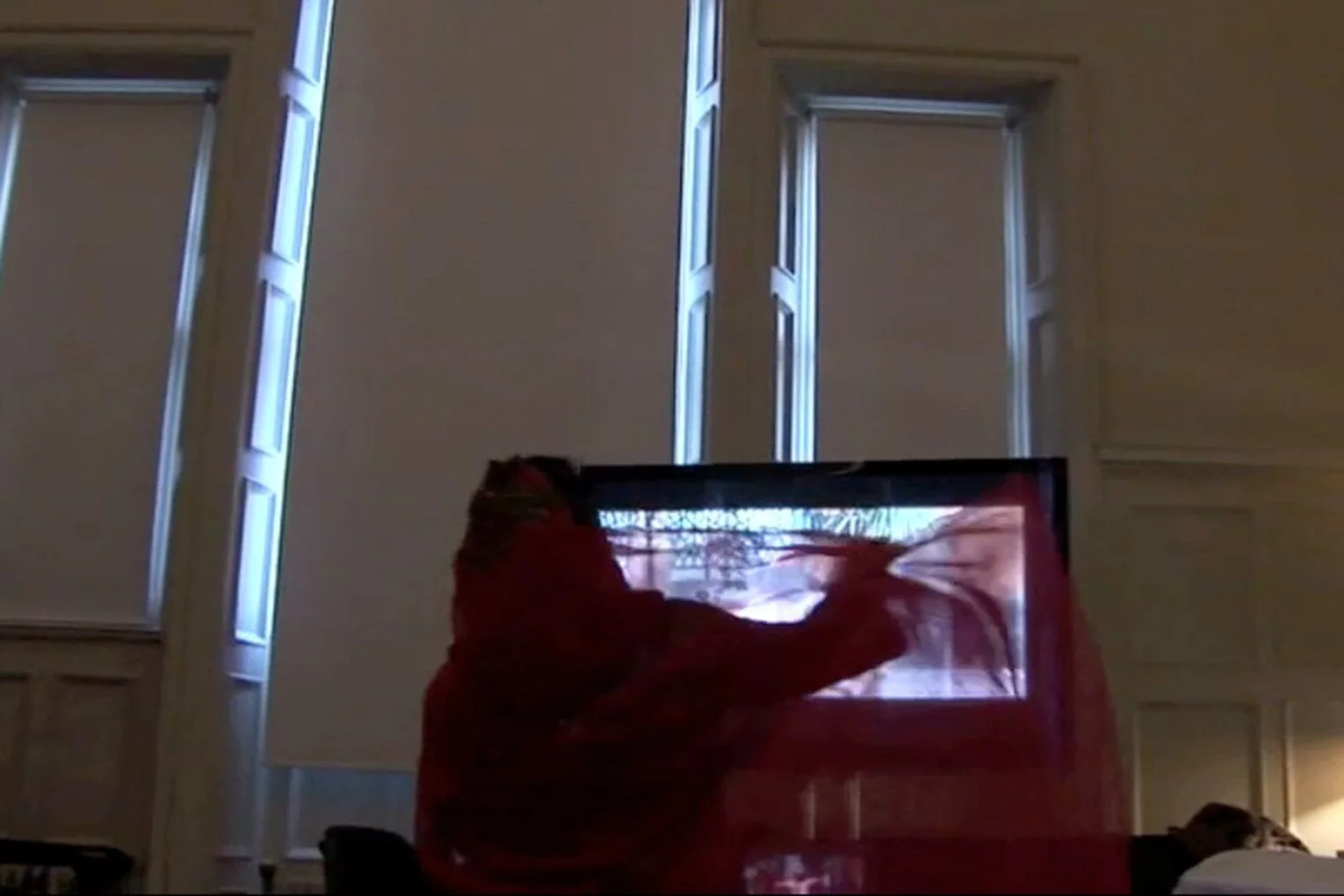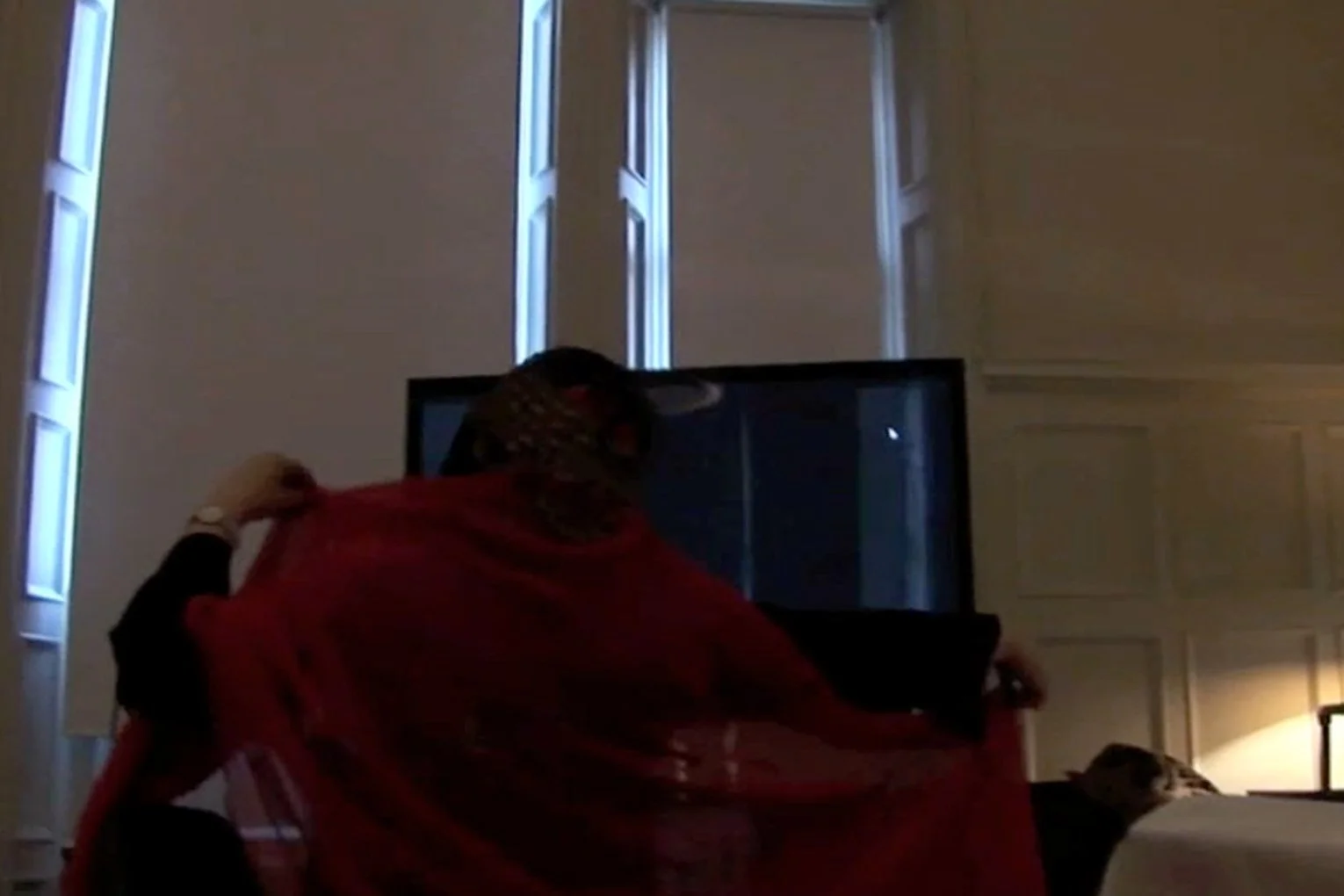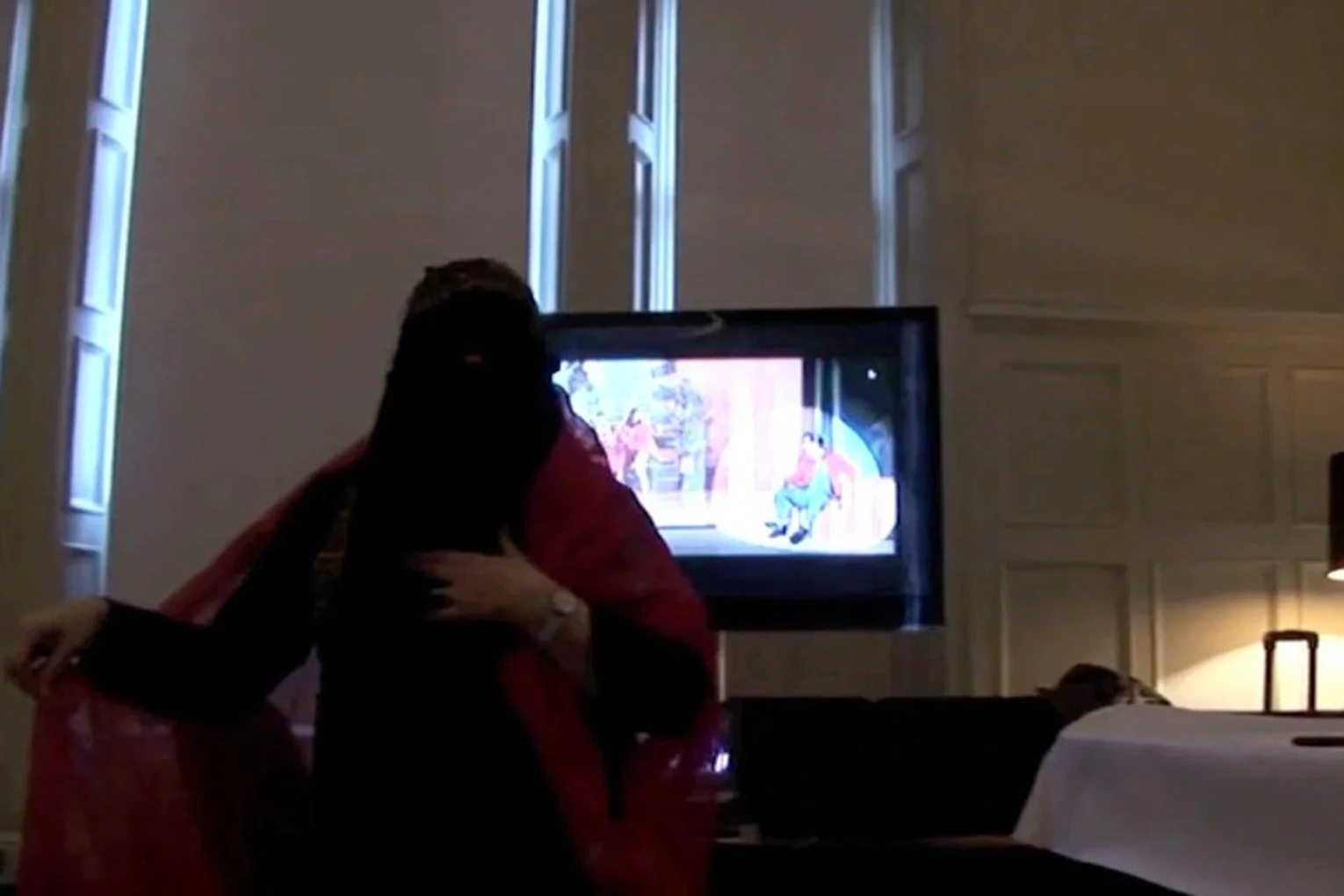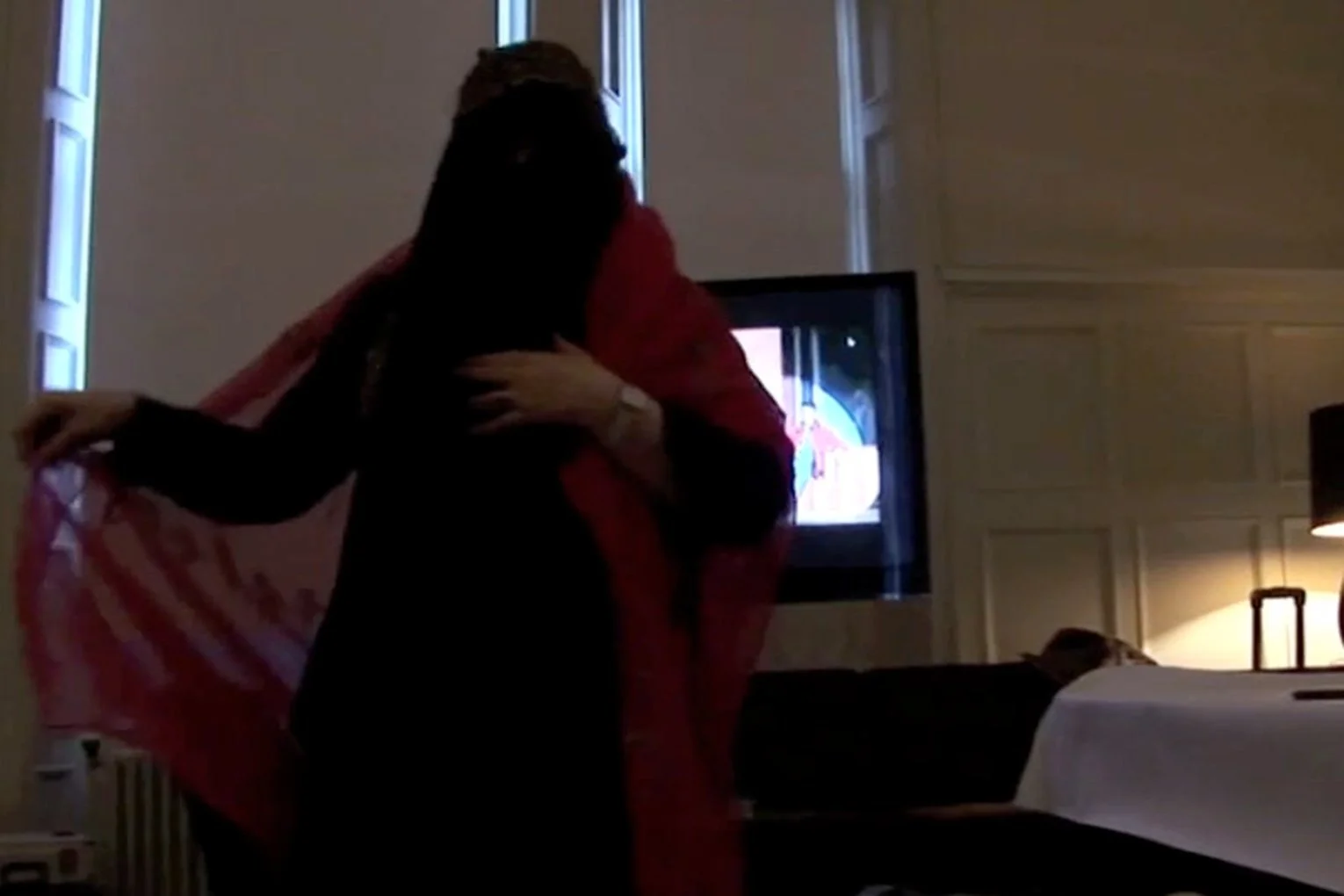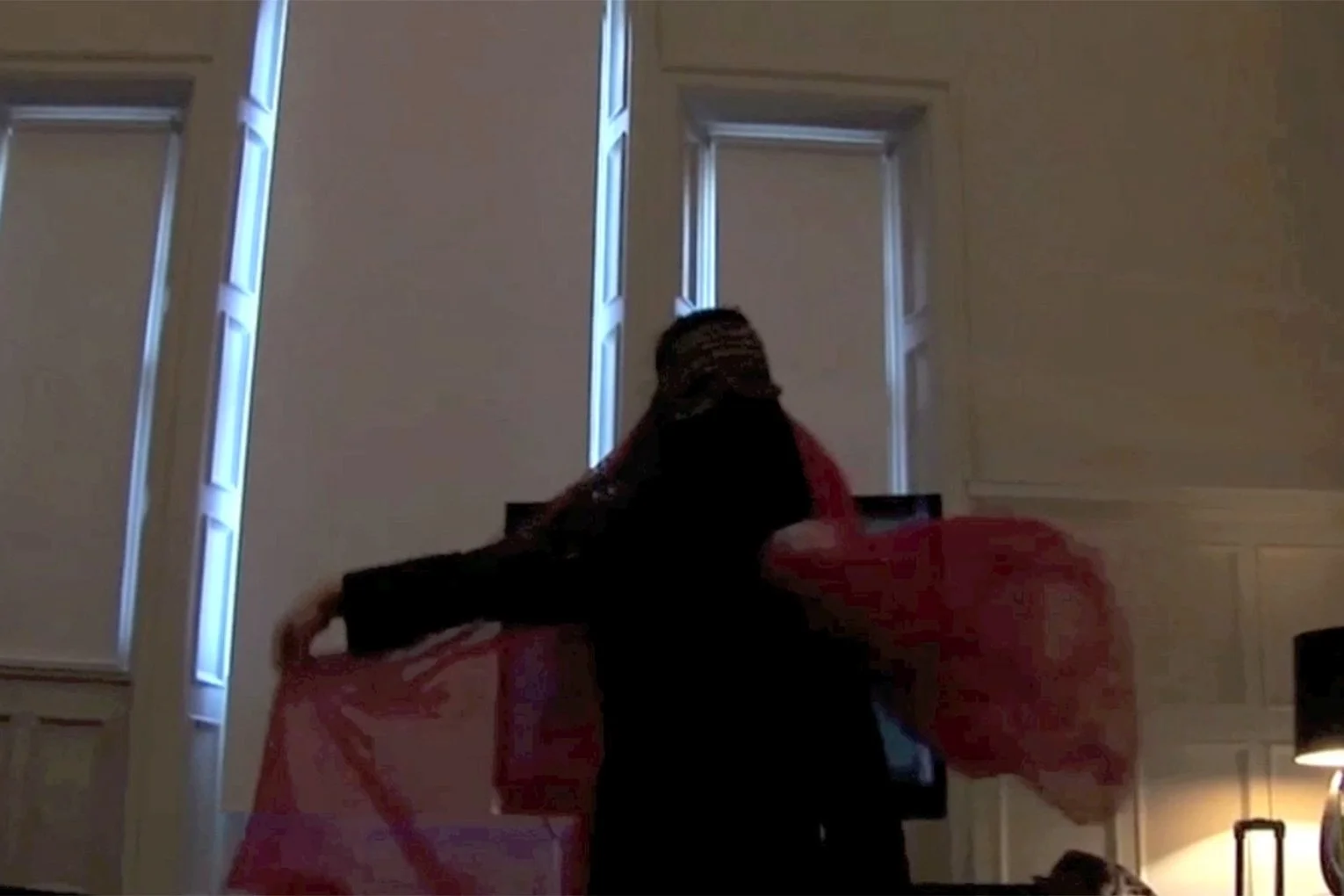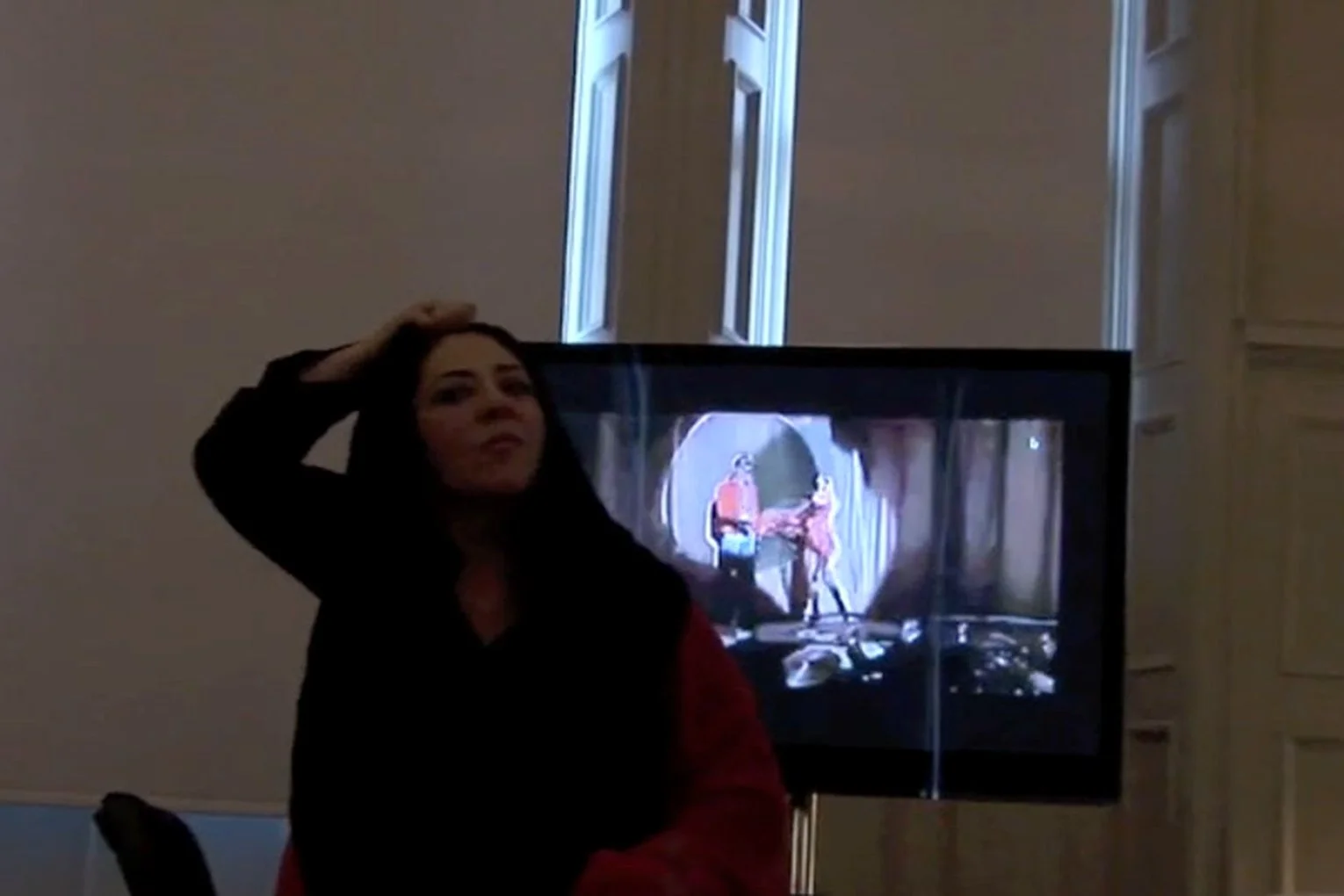Performing Little Egypt
Stills from Little Egypt [performance, 5 min], multimedia, produced and performed at the Subjectivity and Feminism Research Group, Chelsea College of Arts, 2013
Synopsis
“There is very little consent to be found, for example, in the fact that Flaubert’s encounter with an Egyptian courtesan produced a widely influential model of Oriental woman; she never spoke of herself, she never represented her emotions, presence, or history. He spoke for and represented her.” (Said, Orientalism 1978: 6)
In Orientalism, Said highlights the lack of voice and critiques the Oriental female representation in Flaubert’s role in creating ‘a widely influential model of the Oriental woman’, but he does not explore the subject of the woman, in this case, Kuchuk Hanem, later referred to as Little Egypt. Thus, Hanem remains mute and underrepresented, and Flaubert’s influential written representation continues to speak for her.
My performance Little Egypt was conceived as a way of addressing and responding to this lack of voice regarding representing the female body from the East. This raised the question of whether responding to this muteness through re-enacting Little Egypt could help to critique inherited images or engage with this absence through an embodied method of performance. In exploring a response, I considered how I might, as a female artist from the Orient, take on this responsibility and respond to this historical absence and voice a position through performance. My response was to imagine and adopt the model of the Oriental woman, the aforementioned Ghwazee dancer Kuchuk Hanem, and the sexualisation of her body, in a way in which her absence may be redeemed and critiqued.
Maria Kheirkhah

